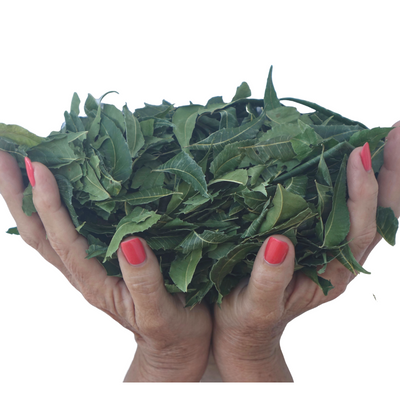Neem – The sacred tree of Ayurveda
Dr. Malte Hozzel on Feb 28th 2024
The Neem tree (Azadirachta indica) is a tropical evergreen tree native to India, Pakistan, Bangladesh and Burma. It belongs to the plant family of the Meliaceae related to the Mahagony tree. It is a fast growing tree that can reach a height of up to 35-40 metres. Its leaves have a very bitter taste, whereas the small, white flowers exhale a very sweet, Jasmine-like fragrance that can be smelled from miles away. And then the oil from the fruits… such a contrast! Unlike numerous other vegetable oils, Neem oil has developed sulfur compounds over its long plant evolution. And these compounds often display a kind of unpleasant odour in nature. You are reminded of garlic – if you want to smell it. Not an oil for facial applications for the majority of people. But sulfur is such a healer – who does not want to pay the price? ?
Neem tree can produce up to 50kg of fruits annually – and the lifespan of the tree is described to be between 150 to 300 years. Today you find Neem also in Cambodia, Laos, Thailand, Africa, the Middle East, the Philippines, South America and Australia. It thrives even in the poorest soils and is especially suited to semi-arid conditions, and it can tolerate very high temperatures.
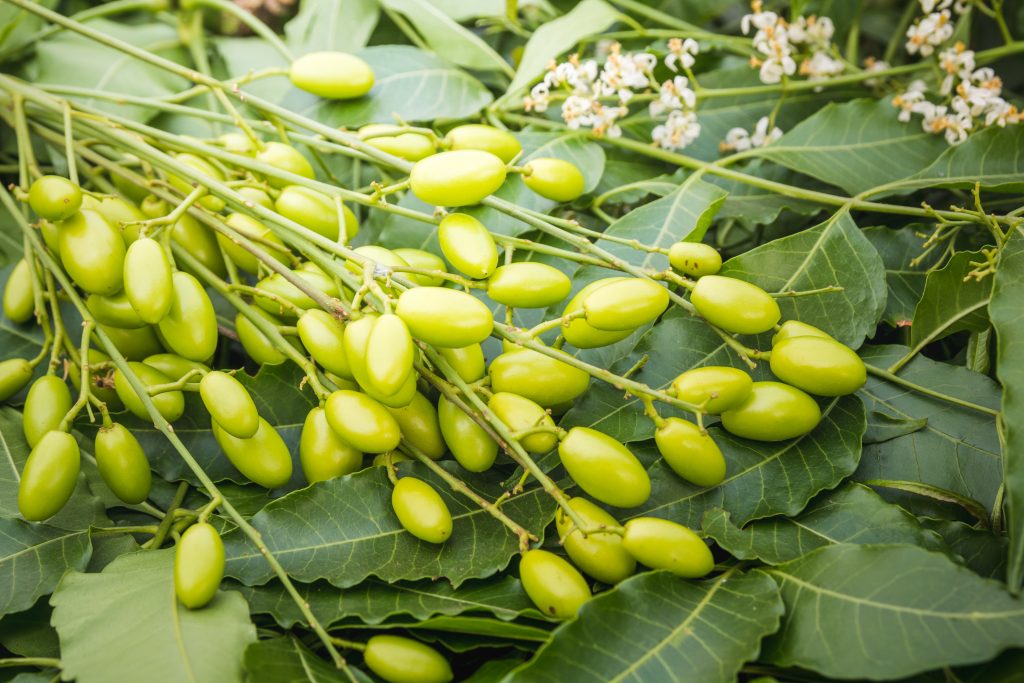
A sacred tree – and so many properties….
In ancient times Neem was the most celebrated medicinal plant of India being mentioned in the Atharva Veda and the Ghriyasutra. It is variously known as “Panacea for all diseases”. The benefits of Neem’s fruits, seeds, oil, leaves, roots and bark have been described in the earliest Sanskrit medical writings. Products made from Neem trees have been used for over 4500 years: About 75% of Ayurvedic remedies contain some form of Neem compounds. The United Nations have declared the Neem tree as the “Tree of the 21st century” as it shows so many benefits, culinary, medicinal and cosmetic. Let me share an anecdote: Can you imagine that some company hiding behind an “international coalition of environmentalists” in the US had tried to patent the name of “Neem” (also of “Curcuma”) a while ago. India had to go into court cases to prevent this scandalous abuse of ancient traditional medical-herbal names. That made Neem even more popular in the West.
The tender shoots and flowers of Neem are eaten as a vegetable in India and Burma. Sometimes the flowers are used for soup or the leaves are fried or pickled. Even lightly cooked, the flavour is quite bitter. Neem honey is a choice delicacy. Neem gum is a rich source of protein and is used as a bulking agent and food additive.
The medicinal properties of Neem are
- antifungal, anthelmintic, antidiabetic, antibacterial, antiviral, antiseptic, disinfectant, contraceptive, sedative
- People suffering from skin diseases like eczema, warts and cold sores are given baths in water with Neem leaf extract.
- According to Ayurveda Neem leaf or bark is considered as an effective Pitta pacifier in summer season due to its bitter taste.
- Neem is also used to treat malarial fevers.
- Neem leaves strengthen the immune system, boost respiratory functions and improve digestive health acting as a deworming agent.
- Neem paste can relieve eye problems.
- Drinking water infused with Neem leaves can control high blood sugar.
Benefits due to its large doses of antihistamine compounds:
- Neem leaves help dilate blood vessels impeding blood coagulation. They decrease elevated heart rates and relax erratic heartbeats thus plummeting high blood pressure levels.
- A tea made from the leaves and mature seeds is a popular remedy for bladder, kidney and prostate ailments.
- Viral diseases such as chicken pox and small pox as well as herpes have been treated successfully with Neem paste/extract.
- Neem is also effective against fungal diseases including fungus that causes infections of the bronchi, lungs, and mucous membranes, athlete’s foot, and fungus of the intestinal tract.
- It acts as a birth control agent for both men and women.
- Dried and powdered Neem flowers are used for reducing bile and controlling phlegm.
- Neem bark, leaves and seed oil contain polysaccharides and limonoids which are beneficial for cancer and tumour treatment.
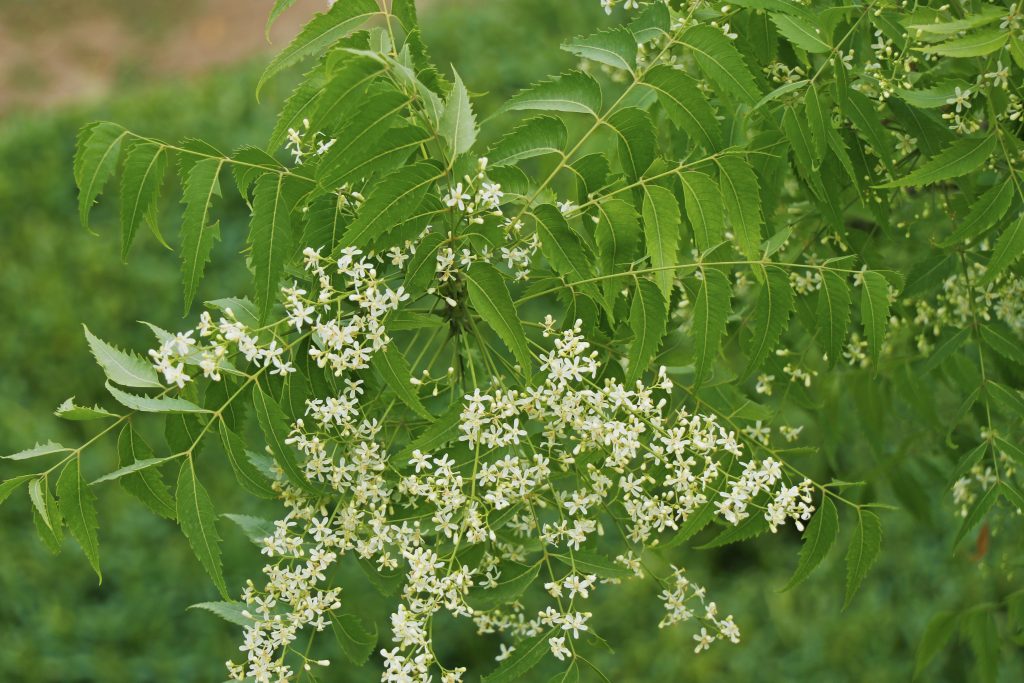
Powdered Neem seeds, soaked overnight, provide a natural alternative to synthetic pesticides. Neem is a highly effective natural insecticide against over 500 types of insects, mites, caterpillars etc.
The stem of Neem is used as a teethbrush in rural India because it protects from gum diseases and decay, removes bad odour and prevents infections. The resin from the bark of the Neem tree is used as a a food additive in South Asia, called “Neem glue”. Neem bark yields a strong, coarse fibre woven into ropes in the villages of India.
Neem leaves and flowers are used for garlands at celebrations and weddings in Tamil Nadu. Powdered Neem leaves are a component for face creams and moisturize the skin by keeping it soft and supple.
Neem oil’s make up
Neem oil is a non-culinary vegetable oil produced by pressing the Neem seeds and fruits. It varies in color; it can be golden yellow, yellowish, reddish, greenish, dark brown, or even bright red. Its strong odour combines some of the odours of peanut and garlic. The oil can be obtained through cold pressing of the seed kernel or by solvent extraction of the seed, fruit, cake or kernel. It contains 25-54% oleic acid (omega-9), 6-16% linoleic acid (omega-6), 16-33% palmitic acid and 9-24% stearic acid.
Traditional Ayurvedic uses of Neem oil
- Treatment of fever, leprosy, inflammations, rheumatic disorders, tuberculosis.
- Neem oil is also used for healthy hair as it prevents greying and hair loss.
- Neem acts against eye and ear infections and is a wound healing agent.
- Due to its natural antiseptic and antifungal properties it has been used to treat diseased skin conditions as well.
- Neem oil improves liver function.
- It detoxifies the blood.
- It balances blood sugar levels.
- A massage with Neem oil can relieve muscle aches and joints and alleviate rheumatism, osteoarthritis, and lower back pain.
Neem oil is an ingredient in many skin care products such as soap, shampoo, lotions, balms, creams, nail polish, tooth paste and as an acne treatment.. The flower oil is also used in aromatherapy and has a calming and restorative effect. And it is one of the best treatments against lice.
“A number of studies also show that shampoos containing neem oil may help treat head lice. In a 2011 study published in Parasitology Research, for example, scientists used a neem-based shampoo on 12 children with head lice. They found that a one-time, 10-minute treatment with the shampoo destroyed all head lice. Repeating the experiment with eight other children, the study’s authors observed that a one-time, 20-minute treatment delivered similar results. What’s more, several other studies suggest that that neem-based shampoo may get rid of head lice and their eggs without triggering any side effects.”
https://www.verywellhealth.com/the-benefits-of-neem-oil-89484
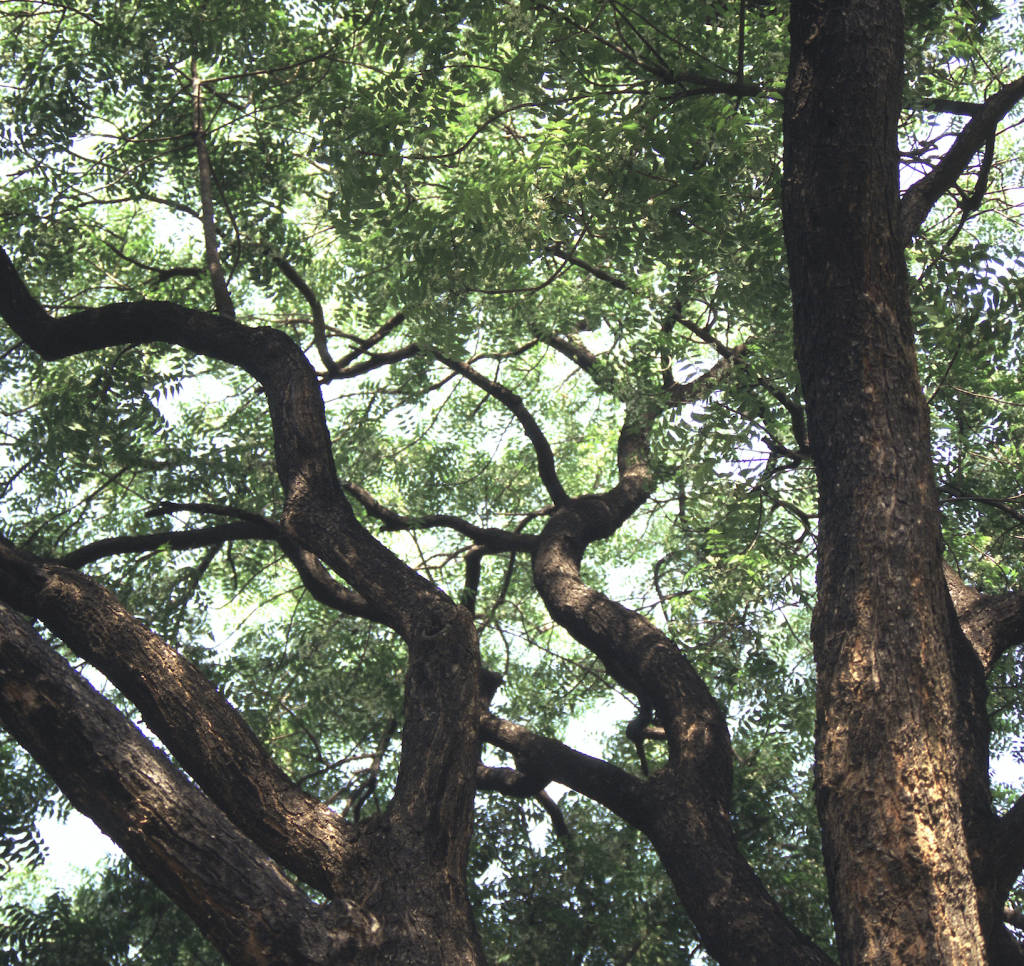
“A key advantage to using Neem, as opposed to some medical treatment and other herbs, is its compliance with the first tenant of the Hippocratic Oath taken by all physicians: ‘First, cause no harm’.”
“Over thousands of years, Neem has been used by hundreds of millions of people and no hazard have been documented for normal dosages… The lack of negative side effects certainly enhances Neem’s appeal to doctors, particularly Naturopathic doctors and doctors of Natural Medicine and consumer alike. Ongoing scientific research is validating what Ayurvedic practitioners have know for millennia; that Neem is a dynamic and useful plant which can solve dozens of health problems, while enhancing overall well-being.”
Klaus Ferlow, one of the best knowers in the West of the amazing healing qualities of the Neem tree.
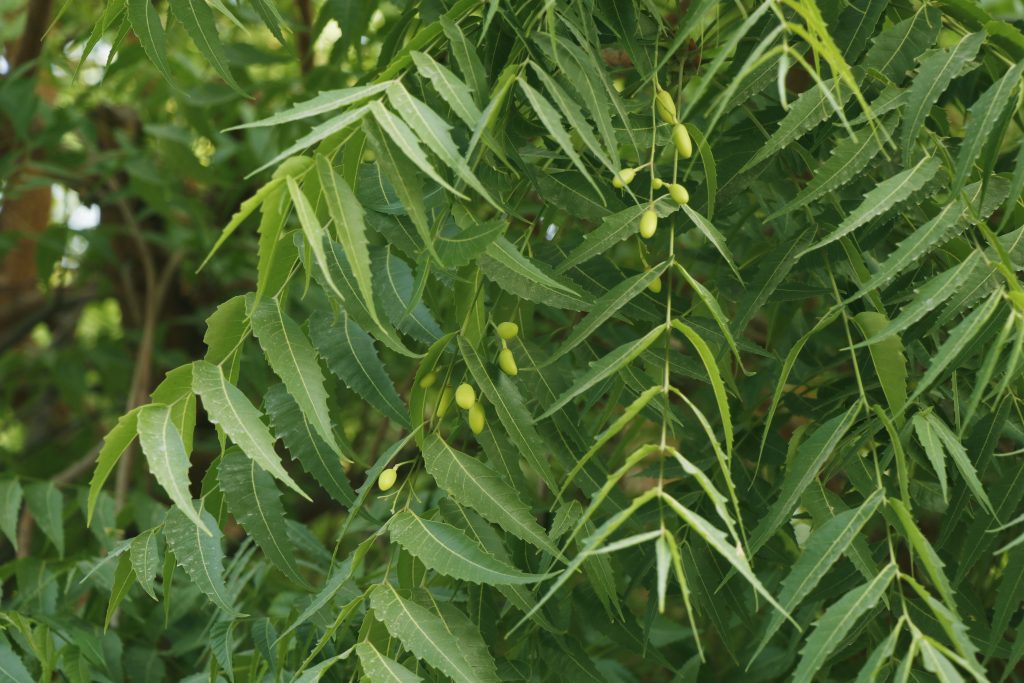
Neem and Cancer
“The components extracted from Neem plant have been used in traditional medicine for the cure of multiple diseases for centuries, including cancer. The extracts of seeds, leaves, flowers, and fruits of Neem have consistently shown chemo-preventive and antitumor effects in different types of cancer. Azadirachtin and nimbolide are among the few bioactive components in Neem that have been studied extensively, but research on a great number of additional bioactive components is warranted.
The key anticancer effects of Neem components on malignant cells include:
– Inhibition of cell proliferation
– Induction of cell death
– Suppression of cancer angiogenesis
– Restoration of cellular reduction/oxidation (redox) balance, and
– Enhancement of the host immune responses against tumor cells”
Neem components as potential agents for cancer prevention and treatment https://www.ncbi.nlm.nih.gov/pmc/articles/PMC4734358 /PMC 2016 Feb 1
The plant compounds such as Nimbolide have shown potential as anti-colon cancer agents. Nimbolide also induces apoptosis in breast cancer, hepato-carcinoma, cervical cancer, choriocarcinoma, colon cancer, lymphoma, leukemia, and melanoma cells. Azadirachtin – another compound in Neem oil shows a similar effect in cervical cancer cells.
The potential of using Neem to enhance the efficacy of other chemotherapeutic agents or as adjuvant in immunotherapy and radiotherapy is also worth further exploration. Taken together, current studies suggest that Neem components have high potential for consideration as effective anticancer agents with minimal or no side effects during therapy.
Cf. https://www.ncbi.nlm.nih.gov/pmc/articles/PMC4734358/
A new study from the Yong Loo Lin School of Medicine at the National University of Singapore has found a promising new natural treatment for prostate cancer.
“Nimbolide, a bioactive terpenoid compound derived from Azadirachta indica or more commonly known as the Neem plant, could reduce the size of prostate tumor by up to 70 percent and suppress its spread or metastasis by half…”
Nimbolide was found to have the same effect against pancreatic cancer cells but via a different mechanism.
“Migration and invasion are the initial and critical events in metastasis and they enhance the ability of a cancer cell to enter and exit the circulation to reach distant organs… The interaction and communication between cancer cells and the microenvironment controls cancer progression… Nimbolide effectively inhibits the migratory, invasive and colony-forming capabilities of pancreatic cancer cells.”
https://dailyhealthpost.com/Neem-leaves
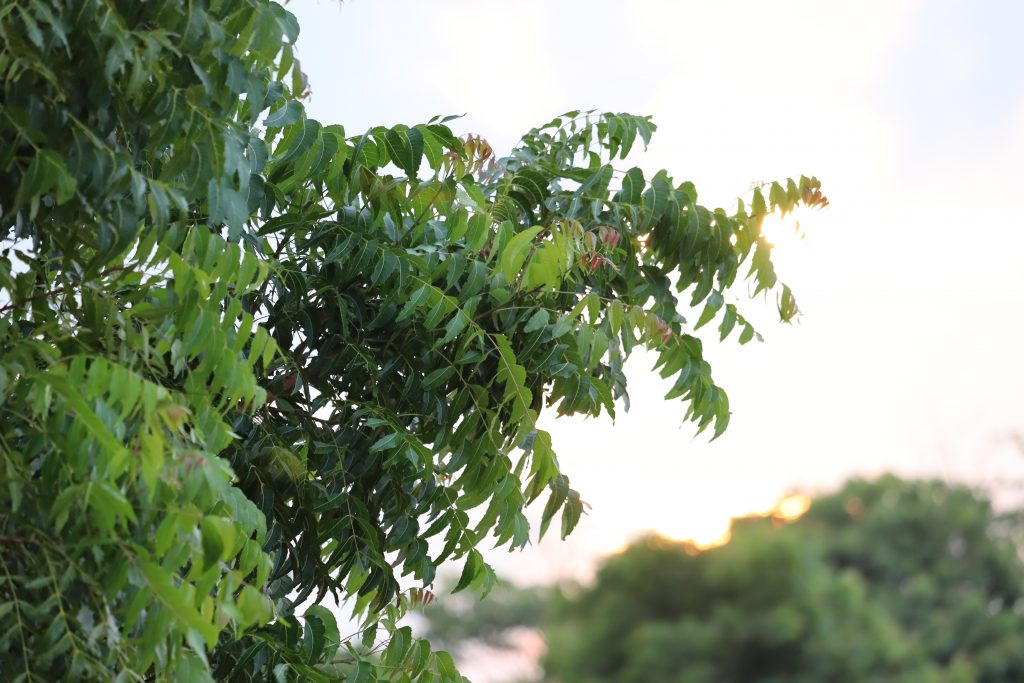
Here an excerpt of a personal story with Neem used on the skin
„Due to the stress of the completely different diet and lifestyle in an environment of widespread pollution and high level of noise, I soon developed severe psoriasis on my scalp and elbows, at times flaring up to a point when I even had difficulties combing my hair due to the very thick build-up on my scalp. I received ongoing treatments from allopathic doctors in Germany and Canada who did not have a clue what the cause of the problem was, and all these treatments cost me a lot of money and were totally unsuccessful. After over forty years I finally gave up and was told by the doctors that I have to live with it for the rest of my life!
Then, a CBC television series ‘The Nature of Things’ with Dr. David Suzuki featured a program describing the miraculous healing power of the Neem tree from India. This was the impetus to my healing, as I began with the help of a professional chemist, to develop a Neem tree cream without harsh chemicals, using Neem tree extract from the leaves of the tree. For almost nine weeks my wife massaged the cream onto my scalp, and finally by the tenth week my scalp was totally clear of the skin conditions from which I had suffered for so long! In the meantime I added also cold pressed Neem oil which has different healing properties than the extract from the leaves to the cream which further enhanced the efficacy and healing power of the cream. Even my psoriasis on my elbows disappeared within merely three weeks and now I have to use only one drop of the Neem oil per elbow each week to prevent recurring of the psoriasis.“
Cf. Klaus Ferlow, “Neem: Nature’s Healing Gift to Humanity”


